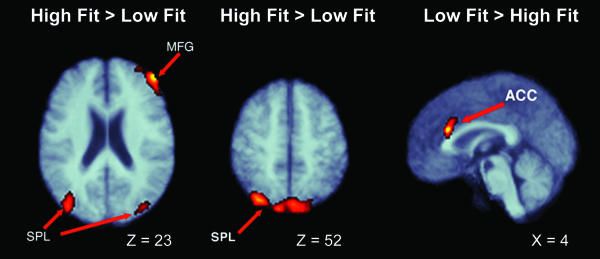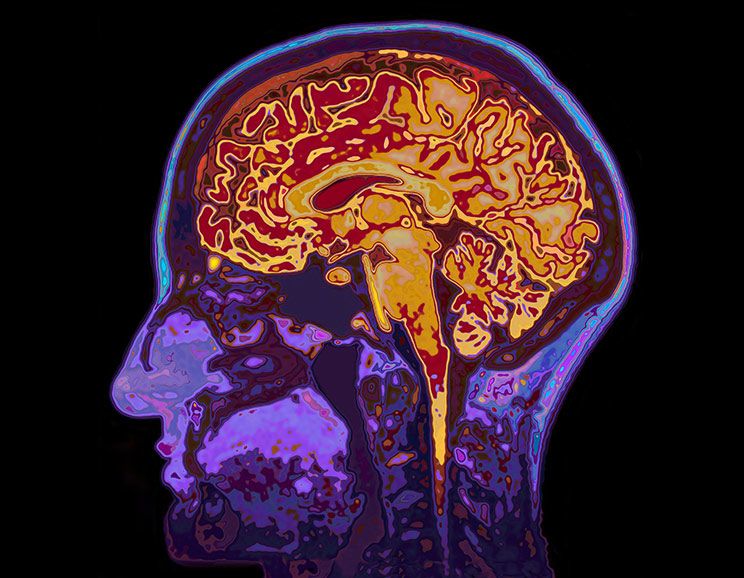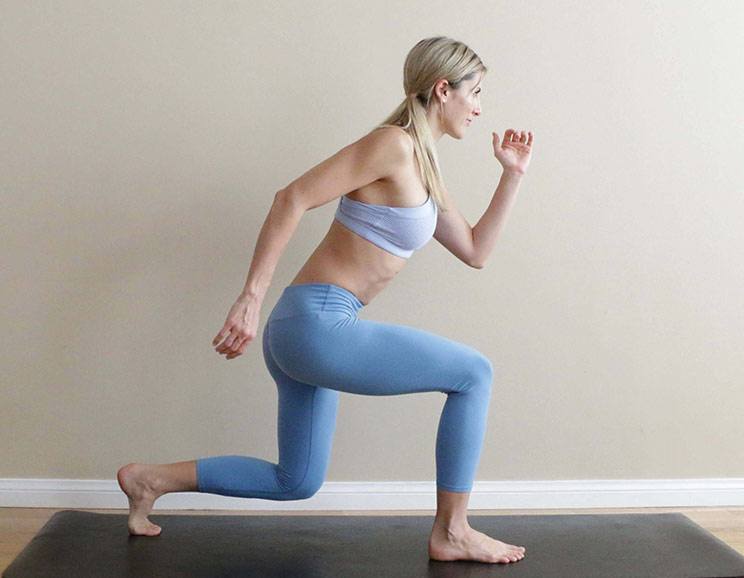There are benefits to both low and high-intensity exercises. Here’s how they impact our brains and muscles differently.
These days, it’s all the rage to partake in high-intensity exercise, which is short in duration and large on the sweat. But as is the case with most trendy things, the hype is not all it seems.
Low-intensity exercise has plenty of benefits, and may even be truer in form to the kind of activity our Paleolithic ancestors regularly undertook. That being said, there are definitely some benefits to short sprinting sessions and keeping your heart rate pegged for a period of time. There is little doubt that if you want to improve your speed and power, high-intensity exercise is definitely the way to go. So which one should you partake in?
Well, the truth is, there are benefits to both forms of exercise. And many people do not understand the difference between the forms, as well as the benefits. Today we will cover exactly how different these forms of exercise are, and just how they impact our brains and muscles differently.
High-intensity Exercise
When we think of exercise, we typically think of common high-intensity activities. This includes sprinting, swimming, burpees, jumping jacks, mountain climbers, push-ups, pull-ups, chin-ups and many more exercises. CrossFit consists mainly of high-intensity exercise, and that is part of why it has caught on like wildfire.
What makes exercise high in intensity? One marker is elevated heart rate. When I am training clients, I will always keep an eye on their heart rate. You never want it to get too high. An easy way to remember your maximum heart rate is take the number 220, and subtract your age. So, if you are a 30-year-old male, your maximum heart rate will be 190 beats per minute.
If you are quick with numbers, you may realize that the older you get, the lower your maximum heart rate becomes. This is part of why older men and women need to be careful about performing high-intensity exercise. One easy way to test if you’re performing high-intensity or low-intensity exercise is to try and carry on a conversation. If you can easily keep up a conversation, your heart rate is probably low or moderate. If you can’t easily talk – chances are you’re doing something pretty high-intensity!
One specific benefit of high-intensity exercise is the increased caloric burn that you may enjoy afterwards. This afterburn effect is called Excess Post-Exercise Oxygen Consumption (EPOC). Depending on the specific activity and other personal factors, high-intensity exercise may help burn more fat and calories compared to low-intensity exercise.
(Related: 10 Effective HIIT Workouts)
Another reason that people seem to enjoy high-intensity exercise is that no gym or fancy equipment is really required. This means you can easily do high-intensity workouts anywhere – at basically any time. This makes this kind of exercise an ideal option for traveling, when studying or otherwise crunched for free time. This pales in comparison to the large amounts of equipment usually needed for typical bodybuilding workouts.
Low-intensity Exercise
While not very sexy, low-intensity exercise has a plethora of benefits. Walking daily is a tough sell — but it may actually help to save your life. One important reason that low-intensity activity is beneficial is that it helps to reduce the risk of cardiovascular disease. This can be done in many ways, but one is via regulating plasma lipids. Low-intensity exercise would be what most think of as “boring”. It could be walking, jogging at a slow pace, or biking casually. It is not the image Gatorade or Nike uses to sell products — that’s for sure.
Ironically, though, this type of “boring” exercise is much more sustainable throughout life, and is arguably more beneficial. It helps protect against a variety of diseases, such as atherosclerosis. One important risk factor for potentially developing atherosclerosis is the elevation of postprandial plasma triglycerides (PPTG) in the blood. Scientific studies have found that low-intensity exercise helps to reduce PPTG. I guess this is hard to market (can’t really show six pack abs and sweat pouring off of a person walking) but this is one of the most important reasons to partake in daily activity.
Low-intensity exercise is also good for reducing hyperglycemia in those who suffer from diabetes. Researchers have even found that 45 minutes of daily walking results in new brain tissue growth. Just walking on a regular basis can help stave off a whole list of metabolic conditions and problems.
Neuroscience studies have also found that regular exercise helps to improve cognitive function and decreases oxidative damage in the brain. Other studies have found that walking benefited serum levels of brain-derived neurotrophic factor (BDNF), insulin-like growth factor type 1 (IGF-1), and vascular endothelial growth factor (VEGF). If you’re not a neuroscientist, these can commonly be interpreted as positive markers of brain function.
Common Exercise Myths
There is actually an interesting discrepancy between what most people think they need to be doing to get the benefits of exercise, and what the scientific studies actually show to be beneficial. The science shows that even low-intensity exercise could provide a simple means to maintaining brain function and promoting brain plasticity (new brain cell growth).
While our culture tends to idolize those performing on the professional sports fields and in the Olympics, these athletes are often performing so much activity that it becomes unhealthy. The benefits of exercise can come from simply walking every day!
In addition to exercising wisely and regularly, a good diet is very important for neuronal function, and contributes just as greatly as exercise does to overall health. In fact, being overweight has been correlated with brain atrophy, white matter changes, disturbances of blood-brain barrier integrity, and risk of dementia and Alzheimer’s disease.
You do not need to train like an Olympian to get the vast benefits associated with exercise. However, it will definitely work in your favor to do something. Physical inactivity has been associated with poorer academic achievement in children. And in adults, aging sometimes is associated with cognitive decline. Exercise, however, has been scientifically shown to improve cognitive function.
Which One Wins?
The answer here is highly individualistic. It is best to mix up both forms of exercise, if possible. If you are a beginner and can only do a limited amount of exercise, do not try to perform high-intensity exercise. Once you can sustain about 20 minutes of exercise, make that your regular routine a few times per week and sustain that pace for 3-5 weeks. Then you can try to slowly add in high-intensity training.
By contrast, if you are looking to run a marathon or have other endurance-oriented goals, low-intensity exercise is probably more ideal for you. Just like training for high-intensity activities, low-intensity expertise takes awhile to acquire, and must be slowly ramped up in order to achieve higher levels of endurance.
In The End…
There is not much of a battle between low-intensity and higher-intensity exercise. They are both beneficial. Ultimately, it really comes down to goals and personal preference. If you like short, draining exercise, clearly you will want to focus on high-intensity activities.
But if you are starting to get older and focusing less on muscle building and more on brain health and longevity, you will want to incorporate more low-intensity exercise into your normal routine. And if you are younger, ideally you’ll want to alternate between low-intensity and high-intensity activities. Not only will this give you a variety of muscular and neuronal benefits, but it will give your body time to recover, so you don’t incur overuse injuries.
Since we are a society which does not exercise nearly enough, it isn’t important to really focus on the minuscule details of high-intensity or low-intensity activities. Four out of five Americans do not get enough exercise – so the simple key is to start moving. Daily exercise can help stop excess weight gain and will also help maintain weight loss. When you engage in physical activity – no matter what intensity level — you burn calories. And if you’re eating a healthy diet – you’ll keep both your body and brain happy.
(Read This Next: Can ‘Skipping the Gym’ Severely Impact Your Health?)



 The 2 Worst Foods For Your Skin + The Dangers of Topical Creams with Dr. Trevor Cates
The 2 Worst Foods For Your Skin + The Dangers of Topical Creams with Dr. Trevor Cates









Show Comments